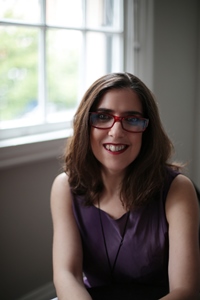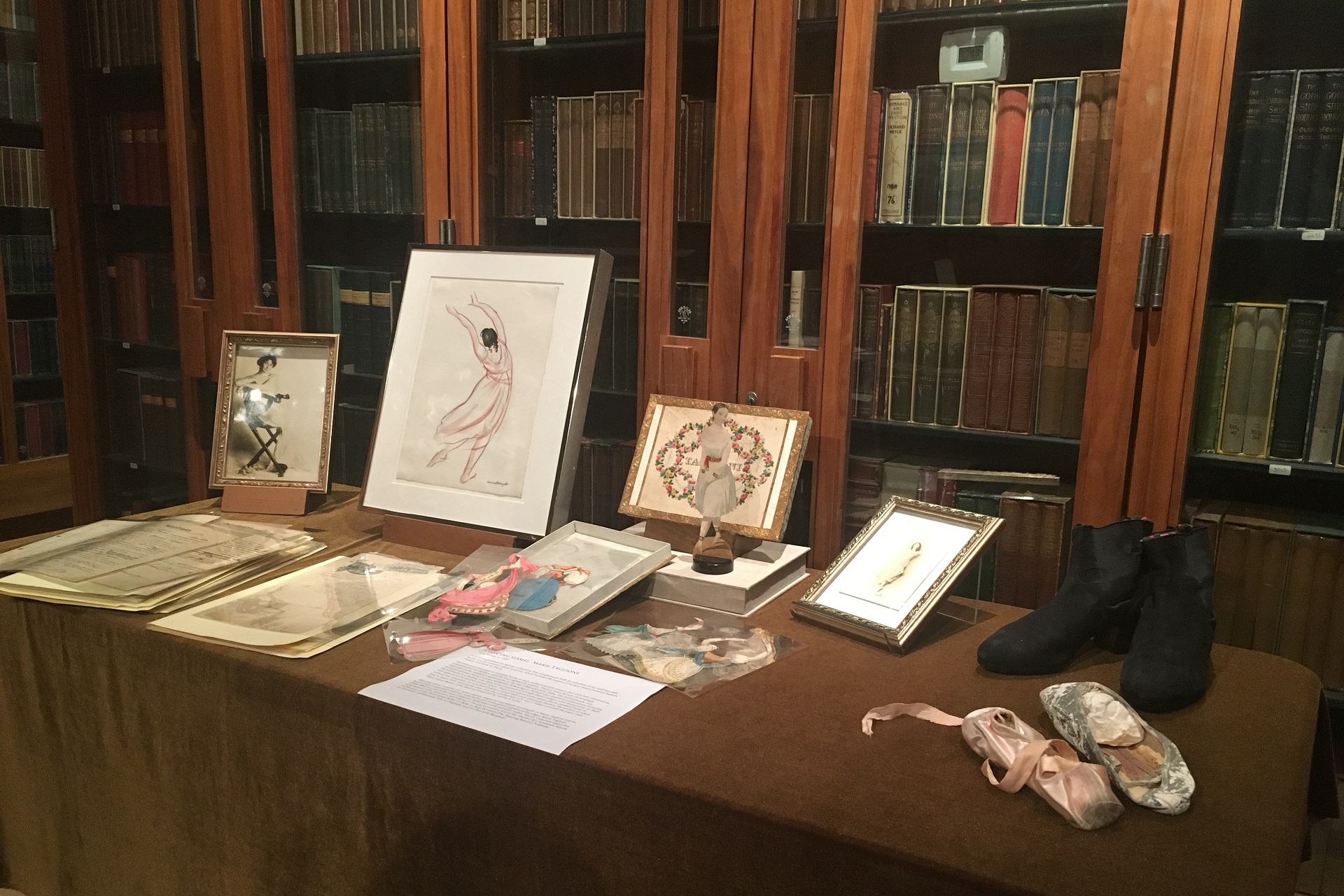How One Performing Arts Organization Is Attracting Audiences that Better Reflect its Community
By Lisa Traiger
.jpg)
Patrons enjoying La Jolla Playhouse’s weekly pre-show Foodie Friday event. Photo by J. Katarzyna Woronowicz
What can dance organizations learn from the company that produced the Broadway jukebox musicals Escape to Magaritaville and Jersey Boys? It turns out a lot. At Dance/USA’s 2018 Annual Conference in Los Angeles, a session titled “Building Audiences for the Arts: Lessons from a Playhouse” shared useful strategies that the award-winning La Jolla Playhouse in San Diego used to reach and engage people across San Diego’s multicultural landscape.
Mary Cook, director of communications at the playhouse, explained that even though the theater, which is located on the campus of the University of California San Diego campus, may not seem to be a like-minded model for dance companies and organizations, there is much to glean.
The playhouse is one of 25 arts organizations around the country participating in The Wallace Foundation’s “Building Audiences for Sustainability” — a $52-million initiative launched in 2015 — designed to help major performing arts organizations across the United States attract new audiences while retaining their existing ticket-buying base. A primary component of Wallace Foundation granting projects is research, noted moderator Jim Leija, director of education and community engagement at UMS, a University of Michigan-affiliated presenting organization. The in-progress project ultimately will disseminate the successes from these sites to provide arts organizations with model programs and methodologies to replicate as they examine their own engagement and marketing practices. Learn more about the Wallace initiative and find free resources here.
An award-winning professional regional theater with multiple Broadway credits and a regional Tony Award, the playhouse facilities are shared with the university’s Department of Theater and Dance. Among the three stages, the largest has a capacity of 500 seats and the six-play season focuses on predominantly new works, with typically one featured musical. Artistic director Christopher Ashley, directed the current Broadway hit Come from Away. Previous artistic director Des McAnuff, who had been affiliated with the playhouse for more than 25 years, directed Jersey Boys and a number of other hits that moved on to New York then across the country. Aside from the mainstage programming, the four-day WoW or Without Walls Festival features site-inspired or site-specific works aimed at younger audiences.
With the Wallace grant, the playhouse dove deep into demographics. While its audiences are primarily Caucasian, “San Diego is 30 percent Hispanic/Latino, 15 percent Asian/Asian American, 8 percent Black/African American and the remainder, the White population, is about 45 percent right now,” said Cook. “It’s a diverse city and our audience does not reflect that, which is very concerning to our artistic team and board.”
When a culturally specific play came up in the season, the marketing department would target the appropriate affinity audience. “So, if we had a play that was depicting the Asian-American experience, we would find the Korean or Korean American community and invite them,” Cook said. “A couple seasons might go by and a show that had something similar would make us think of the play from three seasons ago and we’d call them again.”
“It was not a real relationship,” Cook noted. “So we invited all these different people that we’ve worked with over years and said, ‘We want to have an ongoing relationship with you. We want you to attend every show, not just a few specific shows. We want to be in your community, and we want to know what barriers exist in your community to attending the playhouse. And let’s work to change that.’” From an initial meeting that attracted 30 people, the Playhouse Leadership Council (PLC) was born. This cross-cultural committee of dedicated community leaders acts as ambassadors for La Jolla Playhouse to communities across San Diego.
The PLC members do not merely attend culturally-aligned performances with their communities. The theater invites them to staged readings and asks for their input. And the theater’s artistic department listens closely. One playwright even had a one-on-one conversation with a PLC member who was uncomfortable about a character’s portrayal and ultimately made changes to the script as a result. Cook noted that striving for equity, diversity and inclusion came most easily for the artistic department, but it touches every corner of the playhouse, from artistic to marketing to box office. Even the website was completely redesigned.
The new website took a great deal of thought: “Every single piece of copy was re-written and every image considered. We asked, ‘Who’s going to look at this website? What do we want them to see?’” Cook explained. The new site aims to be more conversational and welcoming. “We wanted to demystify the theater experience,” she said, to attract a new kind of theater goer. There’s a section for newcomers on what to expect, anticipating questions like what to wear and what happens if you’re late. The text no longer scolds patrons, Cook said, instead it reads: “We get it. Sometimes you do everything right and traffic is a mess or the sitter’s late.” Every photo now shows the breadth and diversity of the playhouse’s season and, Cook added, “There are no photos of empty theaters or buildings. Theater is about human interaction and that’s what the new website is meant to convey, through casual language that is not precious,” along with images that show people interacting and connecting, on stage and off.
Lower commitment and lower cost ideas from La Jolla Playhouse that make the arts experience more welcoming included instituting some simple changes like hiring UCSD students as “audience concierges.” These students do not replace the mostly older cohort of volunteer ushers, Cook said. Instead they provide a younger, tech-savvy enthusiastic presence for patrons, starting at the parking lot where the concierges help with the electronic parking meters. Cook also said the theater made the pre-show experience more welcoming and fun by purchasing some hardware-store picnic benches and tables and putting them outside — yes, the weather is always good in San Diego. Adding some fun board games and a lawn-sized Jenga and other games lightened the audience mood. They also invited food trucks to come by for patrons to purchase food and drinks, and occasionally offered low-cost or donated food items, like a free bottle of water or a cookie to theater-goers. This made for a more festive pre-show experience.
For one play (The Cake) about a wedding, they served pieces of cake (donated from a local bakery) after the show. Additionally, the playhouse solicited wedding photos from patrons to display on screens in the lobby. When a theater-goer pointed out that the photos were not representative of the San Diego community, Cook took a second, more careful look and realized they could have been more diverse. The solution: a second request went out for a new batch to broaden the selection. Lesson learned.
Performances that are nontraditional or immersive attract younger audiences, Cook said. These, including the site-specific WoW festival, drew millennials and Gen Xers, but most relevant is that this younger audience is more diverse than the theater’s regular subscription series. Cook reported that non-traditional shows attracted a different demographic: 21 percent were Hispanic/Latino and; 13 percent, Asian. That means that the playhouse will deepen that kind of programming in future years.
With a goal of diversifying 30 percent of the overall audience and 40 percent of the audience for WoW Festival programming, the theater has more work to do. “The playhouse does a lot of premieres of musicals and plays, some of them are big names like the Jimmy Buffet musical,” Cook said. “It makes for a bit of a schizophrenic identity. For example, although there was diversity in the cast of Margaritaville, it drew Jimmy Buffet fans.” That would be middle-aged, White, pop music lovers. “His audience … it’s 93 percent Caucasian and it didn’t have the same metrics of some of the other work we’re doing here,” she admitted.
What’s next, then? “As we move into future years, we’re talking about deepening Without Walls programming as part of our strategic plan. It is integrated as part of the playhouse’s core, but year over year it’s demonstrated to be the program that has the greatest appeal for this young, diverse audience.”
Another area of focus for the playhouse to attract more diverse audiences is board development. “We do see the board shifting a little bit from what was very predominantly a group of socially affluent members to more business leaders and I do think that’s a positive direction,” Cook said, noting the many high-tech and international businesses now populating greater San Diego.
But the foremost area for focus on broadening audiences comes down to artistic programming. “There’s a lot of conversation about the artistic product being more relevant to different kinds of communities. Artistic leadership is really working toward relevancy and connection, which is being perceived as a silver bullet,” said Cook. They are not wary of losing subscribers or donors with this artistic shift, Cook said, noting that they’ve retained and grown the subscriber base over the past four years. “We’re doing work that people want and bringing in extraordinary artists,” she said. “The breadth of the storytelling and the focus on the complexity of the human experience — I think it’s programmed in just the right way so people feel it’s real.”
She added that the artistic leadership team and all the other departments at the playhouse are starting to work closely together on this goal. “If you have that,” she added, “the whole thing falls into place. It isn’t just one ingredient.”
Editor’s note: Interested in learning more about building audiences for the arts? Find research, reports, case studies, articles, and more at The Wallace Foundation’s Knowledge Center.

Lisa Traiger writes frequently on dance and the performing arts and edits From the Green Room, Dance/USA’s online journal.
____
We accept submissions on topics relevant to the field: advocacy, artistic issues, arts policy, community building, development, employment, engagement, touring, and other topics that deal with the business of dance. We cannot publish criticism, single-company season announcements, and single-company or single artist profiles. Additionally, we welcome feedback on articles. If you have a topic that you would like to see addressed or feedback, please contact communications@danceusa.org.
Disclaimer: Opinions expressed in guest posts do not necessarily represent the viewpoints of Dance/USA.



